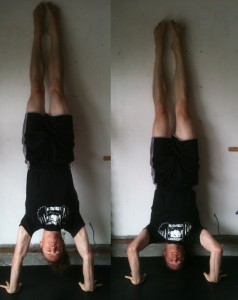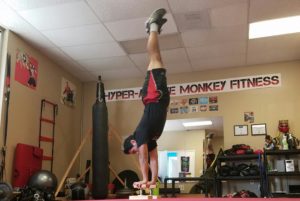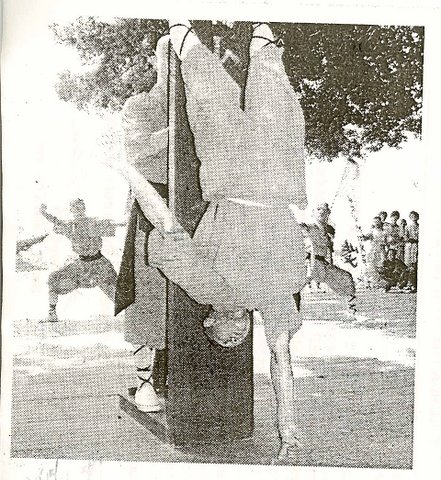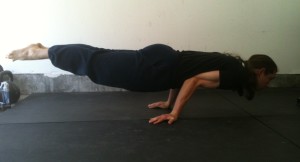The Tiger Bend!
On top of being a skill to work towards on its own, the tiger bend is also a good way to work up to a full on handstands. Since you are resting on your entire lower arm and hand you have a bigger base with which to balance.
When you get over the fact that it can be an odd position to try and get into, the benefits of the tiger bend start to shine. All the main points of holding a handstand are still there, like keeping tight, but you may have to arch your back a little more for this one.
Though it is a lateral move to the handstand, its also an advanced move that can increase the control and variety of skills you have in your library. It involves going from the Forearm Stand up into a Handstand. With a little overbalancing and strong triceps you can get there.
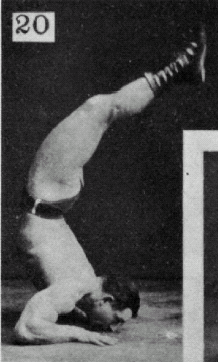
Since this is a move that can’t be pulled off quickly, here are two easier ways. Do the negative movement which is dropping from a Handstand into a Forearm Stand. When you go for this don’t just fall into the position but control it as much as possible.
You can also do Tiger Bend Pushups. Get in a normal pushup position except you are resting on your forearms instead of the hands. Without any rocking motion pushup on to your hands to the top position and lower back down.
These moves aren’t performed often but that doesn’t mean they aren’t great.
Stay Inverted!
-Jonathan Magno
P.S. For the more advanced inverted artist, you can try to duplicate Johnny Weber’s one arm Tiger Bend. Find out how to do it in The True Art and Science of Hand Balancing. The picture above is of Sig Klein from the same book.



